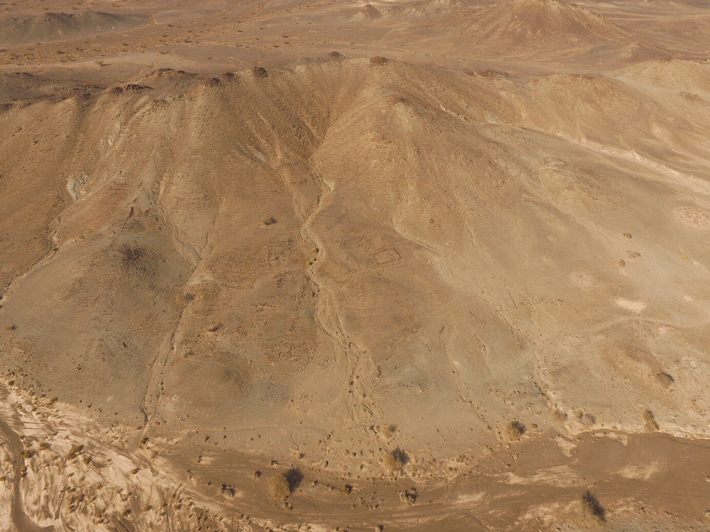 IBRA, OMAN—According to a statement released by Goethe University, while researchers Irini Biezeveld and Jonas Kluge were investigating traces of several settlement sites in eastern Oman, they recovered a lump containing three copper ingots from a test pit. The ingots were formed in the Early Bronze Age, between about 2600 and 2000 B.C., by pouring molten copper into small clay crucibles. Copper ore from the region is known to have been extracted for export to Mesopotamia and the Indus Valley. Further research will attempt to determine how the smelters obtained enough combustible material to produce ingots in the arid region with limited vegetation, the researchers explained. Fragments of large storage jars produced by the Indus culture were also recovered, offering additional evidence of trade between the early Bronze Age peoples of Oman and the Indian subcontinent. To read about early creation of copper objects around Lake Superior, go to "The Copper Standard."
IBRA, OMAN—According to a statement released by Goethe University, while researchers Irini Biezeveld and Jonas Kluge were investigating traces of several settlement sites in eastern Oman, they recovered a lump containing three copper ingots from a test pit. The ingots were formed in the Early Bronze Age, between about 2600 and 2000 B.C., by pouring molten copper into small clay crucibles. Copper ore from the region is known to have been extracted for export to Mesopotamia and the Indus Valley. Further research will attempt to determine how the smelters obtained enough combustible material to produce ingots in the arid region with limited vegetation, the researchers explained. Fragments of large storage jars produced by the Indus culture were also recovered, offering additional evidence of trade between the early Bronze Age peoples of Oman and the Indian subcontinent. To read about early creation of copper objects around Lake Superior, go to "The Copper Standard."
Bronze Age Copper Ingots Uncovered in Oman
